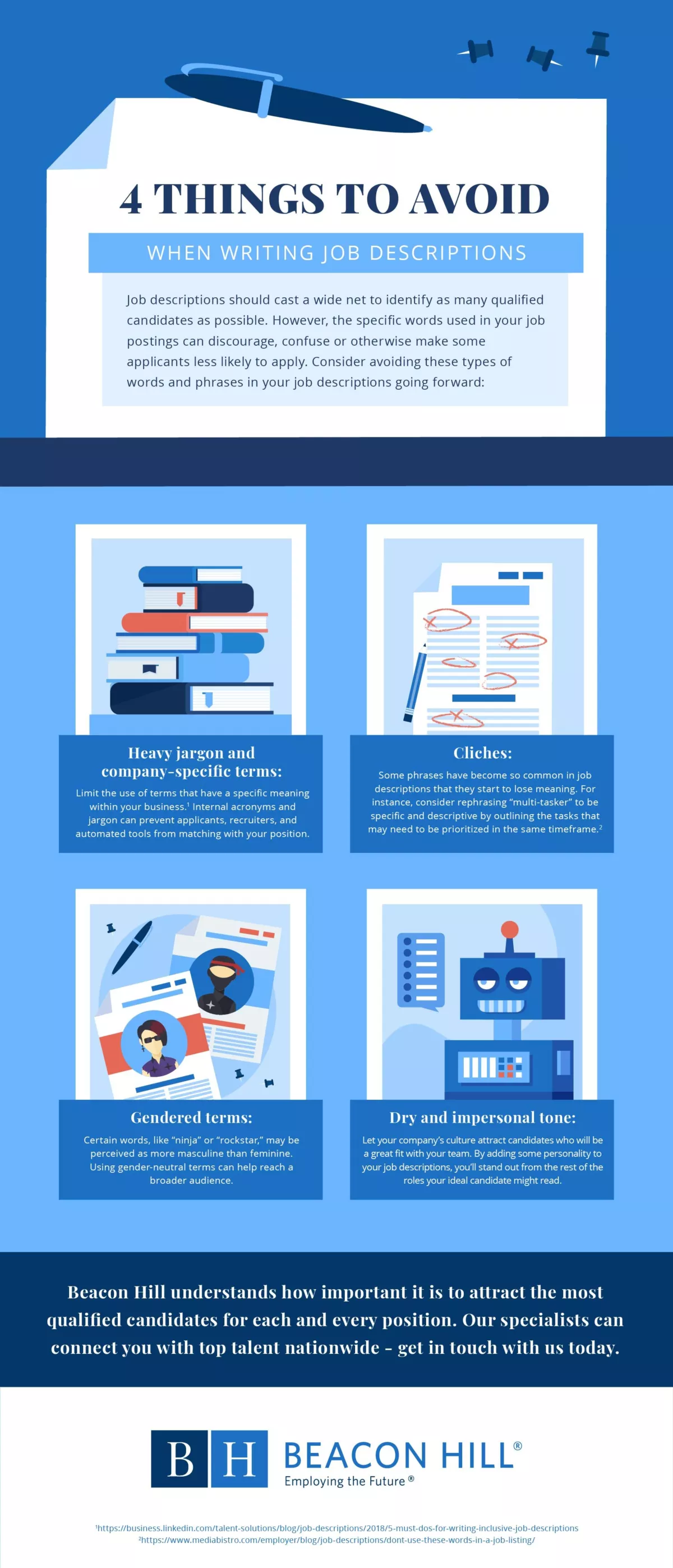
4 things to avoid when writing job descriptions
A well-written job description strikes a fine balance. It provides clear indications of the skills, experience and education needed for a given role, effectively targeting the relevant applicant pool without excessive restrictions. Not only does a strong job description help your company find the right talent, it also creates a more manageable group of candidates.
As much as digital job descriptions can provide additional information and context through a variety of links and media, their foundation is still the words used to write them. Avoiding a few common writing missteps can help craft a better description that appeals to the largest number of qualified candidates.
Careful word choice in job descriptions can pay off
It's important to remember that, in most cases, the overwhelming majority of applicants aren't familiar with the internal language used by your company. While it's vital for new hires to learn this vocabulary as part of the onboarding process, that same expectation doesn't extend to all candidates.
Heavy use of internal acronyms, jargon and words that have a specific meaning to your business can leave applicants feeling unsure about whether to apply — even when they're otherwise highly qualified. Similarly, recruiters may not be able to fully understand the context of the job posting, which means fewer applicants passed along through that valuable pipeline.
Our infographic, "4 things to avoid when writing job descriptions," offers guidance on this area of concern as well as three others when preparing job descriptions. View it here:

 Back to Top
Back to Top
